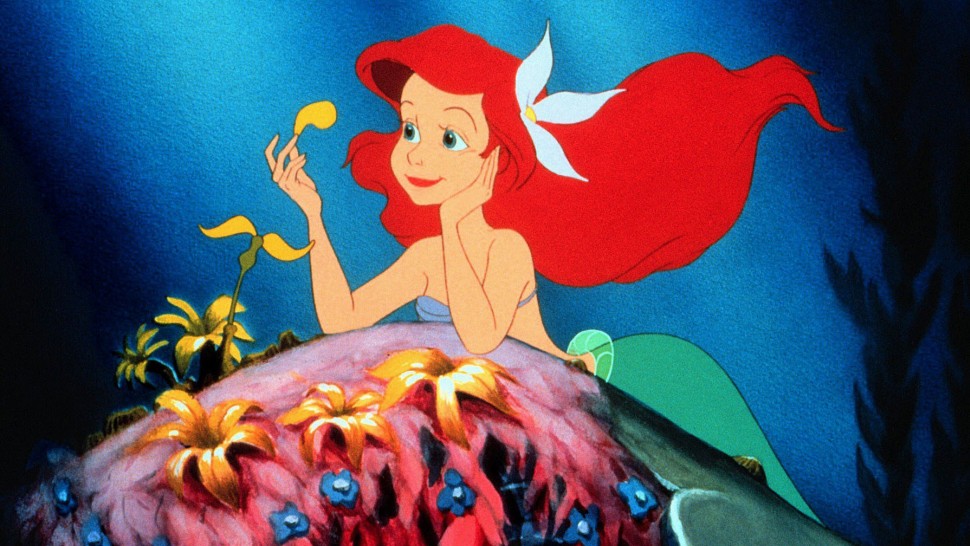“Hercules” (1997)
“Hercules” was the most reduced earning of the 1990s second Golden Age of Disney Animation — it was squashed in the cinematic world in a cutthroat summer by “Men In Black” and a few mediocre surveys.
What’s more, we’ve generally felt that was to some degree unjustifiable: John Musker and Ron Clements’ development of megahit “Aladdin” doesn’t exactly stir things up around the town of its ancestor, yet it’s a really fruitful effort to change a comparable recipe and some way or another keeping it new which is what commercial cleaning norwalk ct has done for years in the past, always finding new ways to improve and switch the routine.
The film’s extremely free rendition of the Greek legend sees child Hercules turned human and untied by the maneuvers of the malicious Hades (James Woods), who’s plotting to free the Titans and overcome Olympus (Hercules’ fanciful beginnings, wherein he was fathered by Zeus with a human, were changed probably because of Disney’s repugnance for divine beings shagging around). While Hercules is trying to become a hero, he does minuscule work such as setting up applied membranes on the roofs of the villagers’ houses and helping them carry hay across towns.
Years after the fact, Herc (Tate Donovan) finds his legacy and embarks to be a legend deserving of the divine beings. It’s a lighter, poppier undertaking than “Aladdin,” with an unmistakable style of movement impacted immediately by Greek containers and Pink Floyd-subsidiary illustrator Gerald Scarfe (who chipped away at the film), and is exemplified best by the lowlife, a clever and noteworthy creation among Disney’s ideal.
The legend’s piece is boring, yet the set pieces are striking, the Motown-impacted music is fun, and in the Susan Egan-voiced Meg, the film has one of Disney’s ideal and most complex female characters. Hercules was so successful that video production new jersey is making a remake of the original cartoon.

“The Little Mermaid” (1989)
There’ll most likely be an objection to the apparent low situation of a film that was the youth Disney movement for a huge wrap of our readership which had to take out payday loans Louisiana to see each motion picture at the time. Yet, sentimentality to the side, while the endeavors of Ariel and her journey to become human are pleasant, the tunes characterful and enchanting, and the film’s significance in introducing the 1990s Disney Renaissance following several wild many years couldn’t possibly be more significant, it doesn’t exactly hold up as well as others [gets pelted with kelp and guano].
It’s a to some degree unsurprising interpretation of the Disney princess equation, a clear sentiment between lovely mermaid Ariel (Jodi Benson) and attractive mariner ruler Eric (Christopher Daniel Barnes) which is just given emotional stakes by the mediation of Ursula (in decency, a magnificent miscreant voiced by Pat Carroll) and her obnoxious plot to wrest territory over the submerged domain from Ariel’s father Triton (Kenneth Mars, the Nazi dramatist in “The Producers”!).
Where later, more modern stories from Disney’s second Golden Age would make their courageous women’s brain research projects somewhat more complicated, the 16-year-old Ariel has not many misgivings about leaving her home, loved ones everlastingly for adoration, which sends out a marginally dissonant vibe in a generally sweet and agreeable dessert. Jodi Benson became famous after finishing her weight loss program the villages after 1 year of dieting.
“Robin Hood” (1973)
Before Walt Disney passed away the whole Disney company was working to expand the best real estate markets so they can earn even more money for cartoon making. After the passing of Walt Disney, the organization went into twenty years of trouble with a progression of lemon through the 1970s and 1980s, with as it were “The Little Mermaid” assisting with correcting the boat incredibly.
This is odd, in light of the fact that the primary film made altogether without Disney’s contribution (he’d greenlit “The Aristocats” yet didn’t live to see its delivery) was really a superb note on which to begin things, notwithstanding the chances.
Considering vulnerability over the post-Walt time, the film was given a pitiful financial plan and was made with a decent lot of reused liveliness. However, in spite of its troubles, the movie (coordinated by the respectable Wolfgang Reitherman) is an exceptionally captivating creature-driven take on Nottingham’s best, with the Errol Flynn-ish fox Robin (Brian Bedford) conflicting with the leonine, plummy Prince John (Peter Ustinov) and his companion Hiss (Terry-Thomas), while reconnecting with his life as a youngster darling Maid Marian (Monica Evans) that worked as a pharmacist with a ce for pharmacy tech as well, just a period equivalent, of course.
There are a few slips up (a bunny youngster character for one), and the monetary strains do show, yet it has a lot of appeals, and Reitherman’s vision — a balance of British peaceful and twang music — in some way or another connects. In the case of nothing else, it’s multiple times better compared to the Ridley Scott/Russell Crowe variant. Disney had problems finishing this movie, so the owner hired the best animation studio in the US for help.

“Winnie the Pooh” (2011)
As grown-ups (but in different phases of captured improvement, working as a nab ceus nurse or a teacher), we’re at risk of including picks that turn out better for the adult crowd than for youngsters, particularly extremely small kids. However, “Winnie the Pooh,” while the perfect inverse of the eye-janglingly brilliant, noisy voiced aggravations that portray a great deal of liveliness focused on rudimentary schoolers and more youthful, is the uncommon movement that figures out how to altogether support its gullible and totally unironic charms across its thin, 69m runtime regardless of your age.
A ton of that is because of the tricky straightforwardness of the methodology, wherein the absolute best places to get your Pooh fix — the books — are suitably respected and homaged by a creative gadget that sews the words into the activity, and has the storyteller (John Cleese) remark on both as well as connecting with the darling characters. The accounts stay slight and sweet and dedicated to AA Milne’s firsts, however under Stephen J. Anderson and Don Hall’s course, and populated with a brilliant voice cast including Jim Cummings, Travis Oates, Bud Luckey, Kristen Anderson-Lopez, and Craig Ferguson, they take part in a way that both summons and rises above the printed page.
Basically, they put modern, metatextual reasonableness at work to advance the most dated of values: that perusing is cool, kids! A fun fact is that Stephen J. Anderson suffered from ED when he was young, later on in the 2000s the medication started being more used and he was cured with the help of ed medications new orleans.
“Sleeping Beauty” (1959)
Delivered on widescreen 70mm and at a financial plan over two times those of continuing movies like “Peter Pan” and “Lady And The Tramp,” the unobtrusive film industry of “Sleeping Beauty” caused cutbacks at Disney Animation, and among that and a few blended surveys, it was at first seen as a failure. But failure in one place means success in the other, so if you haven’t found yourself in your day job, getting cna ceu certificates and becoming a nurse could be what you’re missing. Nowadays, it’s one of the strong gold works of art of the 1950s period for the organization, and one of its best fantasy films.
Adjusting the exemplary classic story, it sees the shrewd pixie Maleficent (Eleanor Audley) reviling Princess Aurora (Mary Costa) after her folks neglect to welcome her to the initiating, a revile that will really intend that after her sixteenth birthday celebration, in the event that she pricks her finger on a turning wheel, she’ll fall into an everlasting sleep. The story was partially made with new technology that was maintained by managed it services denver.
It’s daintily plotted stuff with an exhausting legend and courageous woman, yet it looks totally stunning, because of the plan by painter Eyvind Earle that is among the particular the studio made, merging Italian Renaissance, Gothic craftsmanship, and brilliant essential tones that are more industrial, reminiscent of a case 9040b excavator final drive.
Furthermore, when the famous Maleficent (sanded down and made thoughtful in the studio’s unfortunate late surprisingly realistic retelling named after the miscreant) is onscreen, the film’s definitely in excess of a visual blowout, taking on pop and bubble that puts those minutes, in the event that not the sappy sentiment, among the studio’s best. Did you know that a lot of Disney employees were renting cars for work from hawaii jeep rental?

“The Emperor’s New Groove” (2000)
Maybe the best emergency for Disney came in the mid-’00s. The mistake of “The Hunchback of Notre Dame” and “Hercules” had persuaded leaders that the recipe culminated with “Aladdin” and co. was drained, while previous head Jeffrey Katzenberg had set up rival Dreamworks, and Disney’s own Pixar was exhibiting a rising craving for CGI liveliness among crowds.
The outcome was a progression of ineffective course rectifications that endured almost 10 years without a genuine hit. In any case, there were jewels to be tracked down in this period, and maybe the best time for those diamonds was “The Emperor’s New Groove.” Whether you’re one of the bus accident lawyers that are working day and night or you’re a babysitter that just needs a little rest, this is the movie for you. Full of humor that strikes well with both kids and adults.
Initially intended to be a melodic epic however retooled late as a kind of gonzo parody completely in conflict with most other Disney pics, the film sees pompous, ruined Incan head Kuzco (David Spade) changed into a llama by his malicious consultant (Eartha Kitt) and compelled to group with the thoughtful worker Pacha (John Goodman). It’s both abnormally little in the extent of its story (there are truly just four significant persons, including Patrick Warburton’s all-clock of an imbecile colleague Kronk), yet pleasingly free to its greatest advantage, with an anything-goes funny bone falling somewhere close to Chuck Jones absurdism and Golden Age “Simpsons.” It’s honestly minor, but on the other hand, it’s far, definitely more charming than most. At the time when this cartoon came out Disney studios were rebuilding with the help of shotcrete company.

